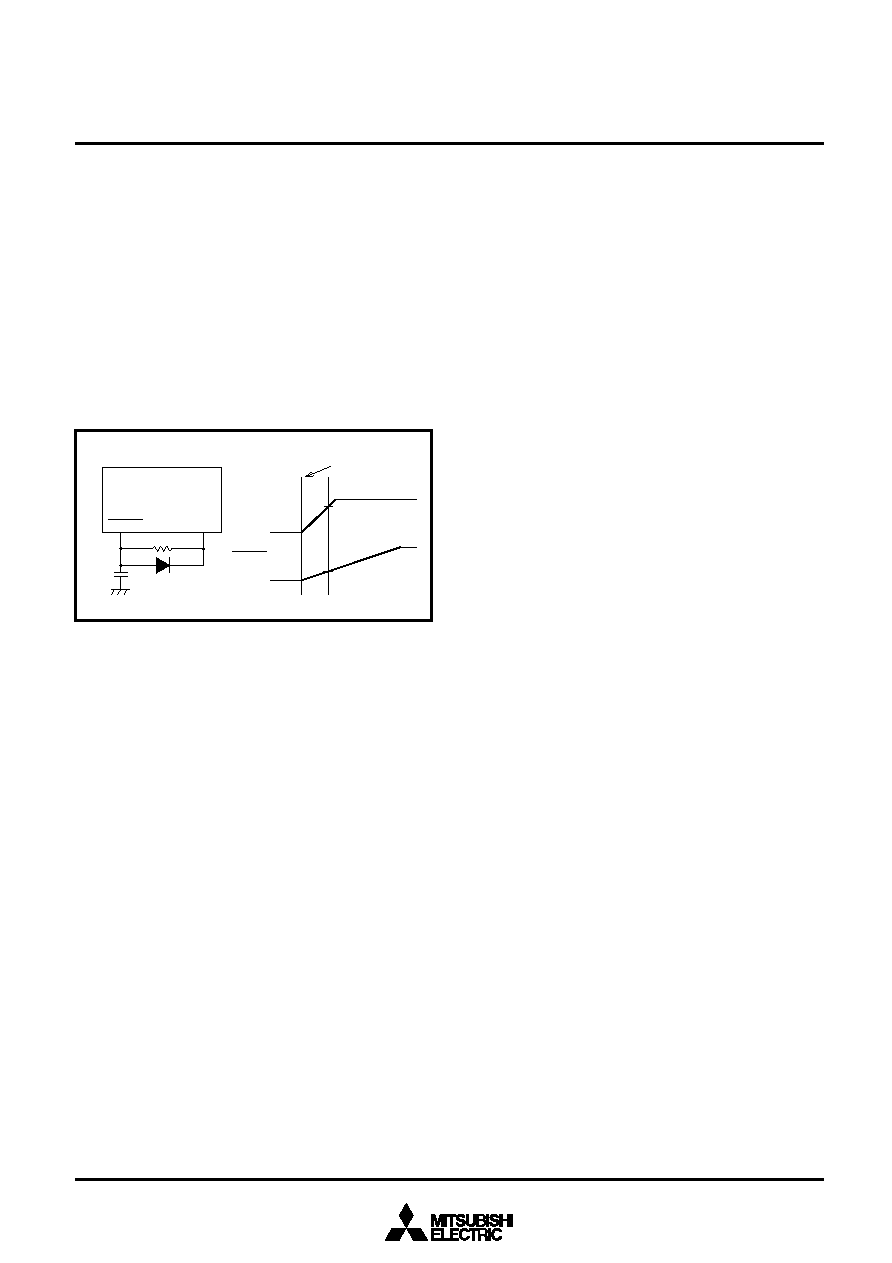- 您現(xiàn)在的位置:買賣IC網(wǎng) > PDF目錄45037 > M37754M8C-XXXGP 16-BIT, MROM, 40 MHz, MICROCONTROLLER, PQFP100 PDF資料下載
參數(shù)資料
| 型號: | M37754M8C-XXXGP |
| 元件分類: | 微控制器/微處理器 |
| 英文描述: | 16-BIT, MROM, 40 MHz, MICROCONTROLLER, PQFP100 |
| 封裝: | PLASTIC, QFP-100 |
| 文件頁數(shù): | 74/114頁 |
| 文件大小: | 1116K |
| 代理商: | M37754M8C-XXXGP |
第1頁第2頁第3頁第4頁第5頁第6頁第7頁第8頁第9頁第10頁第11頁第12頁第13頁第14頁第15頁第16頁第17頁第18頁第19頁第20頁第21頁第22頁第23頁第24頁第25頁第26頁第27頁第28頁第29頁第30頁第31頁第32頁第33頁第34頁第35頁第36頁第37頁第38頁第39頁第40頁第41頁第42頁第43頁第44頁第45頁第46頁第47頁第48頁第49頁第50頁第51頁第52頁第53頁第54頁第55頁第56頁第57頁第58頁第59頁第60頁第61頁第62頁第63頁第64頁第65頁第66頁第67頁第68頁第69頁第70頁第71頁第72頁第73頁當(dāng)前第74頁第75頁第76頁第77頁第78頁第79頁第80頁第81頁第82頁第83頁第84頁第85頁第86頁第87頁第88頁第89頁第90頁第91頁第92頁第93頁第94頁第95頁第96頁第97頁第98頁第99頁第100頁第101頁第102頁第103頁第104頁第105頁第106頁第107頁第108頁第109頁第110頁第111頁第112頁第113頁第114頁

62
PRELIMINAR
Y
Notice:
This
is not
a final
specification.
Some
parametric
limits
are
subject
to change.
MITSUBISHI MICROCOMPUTERS
M37754M8C-XXXGP, M37754M8C-XXXHP
M37754S4CGP, M37754S4CHP
SINGLE-CHIP 16-BIT CMOS MICROCOMPUTER
RESET CIRCUIT
______
Reset is released when the RESET pin is returned to “H” level after
holding it at “L” level while the supply voltage is at 5V ±10%. As the
result, program execution starts at the address formed by setting the
address A23–A16 to 0016, A15–A8 to the contents of address FFFF16,
and A7–A0 to the contents of address FFFE16.
Figure 76 shows the status of the internal registers during reset.
Figure 77 shows an example of a reset circuit. When a stabilized
clock is input from the external to the oscillation circuit, the reset in-
put voltage must be held 0.9V or lower when the supply voltage
reaches 4.5V. When connecting a resonator to the oscillation circuit,
return the reset input voltage from “L” to “H” after the main-clock os-
cillation is fully stabilized
RESET
VCC
RESET
Power on
4.5V
0 V
0.9V
Fig. 77 Reset circuit example (perform careful evaluation at system
design before using)
INPUT/OUTPUT PINS
Ports P0 to P11 all have the direction register and each bit can be
programmed for input or output. A pin becomes an output pin when
the corresponding bit of direction register is “1”, and an input pin
when it is “0”.
When a pin is programmed for output, the data is written to its port
latch and it is output to the output pin. When a pin is programmed for
output, the contents of the port latch is read instead of the value of
the pin. Accordingly, a previously output value can be read correctly
even when the output “H” voltage is lowered or the output “L” voltage
is raised owing to an external load and others.
A pin programmed as an input pin is floating, and the value input to
the pin can be read. When a pin is programmed as an input pin, the
data is written only in the port latch and the pin remains floating.
Additionally, ports P95, P54 to P57 include pull-up transistors. The
pull-up function of ports is selected with bits 7 and 6 of the particular
function select register 1. Refer to the section on Interrupts for the
pull-up function.
Figures 78 and 79 show block diagrams of ports P0 to P11 in the
_
single-chip mode and E output.
Ports P0 to P4, P10 and P11 are also used as pins of address, data
and control signals. Refer to the section on Processor mode for more
details.
相關(guān)PDF資料 |
PDF描述 |
|---|---|
| M37754S4CGP | 16-BIT, 40 MHz, MICROCONTROLLER, PQFP100 |
| M37754M8C-XXXHP | 16-BIT, MROM, 40 MHz, MICROCONTROLLER, PQFP100 |
| M37754S4CHP | 16-BIT, 40 MHz, MICROCONTROLLER, PQFP100 |
| M37754S4CHP | 16-BIT, 40 MHz, MICROCONTROLLER, PQFP100 |
| M37754M8C-XXXGP | 16-BIT, MROM, 40 MHz, MICROCONTROLLER, PQFP100 |
相關(guān)代理商/技術(shù)參數(shù) |
參數(shù)描述 |
|---|---|
| M37754M8C-XXXHP | 制造商:MITSUBISHI 制造商全稱:Mitsubishi Electric Semiconductor 功能描述:SINGLE-CHIP 16BIT CMOS MICROCOMPUTER |
| M37754S4CGP | 制造商:MITSUBISHI 制造商全稱:Mitsubishi Electric Semiconductor 功能描述:SINGLE-CHIP 16BIT CMOS MICROCOMPUTER |
| M37754S4CHP | 制造商:RENESAS 制造商全稱:Renesas Technology Corp 功能描述:SINGLE-CHIP 16-BIT CMOS MICROCOMPUTER |
| M3775PR-H400CL | 制造商:Bonitron 功能描述:OVERVOLTAGE BRAKING RESISTOR |
| M3775RK-0.75A | 制造商:Bonitron 功能描述:OVERVOLTAGE BRAKING RESISTOR |
發(fā)布緊急采購,3分鐘左右您將得到回復(fù)。